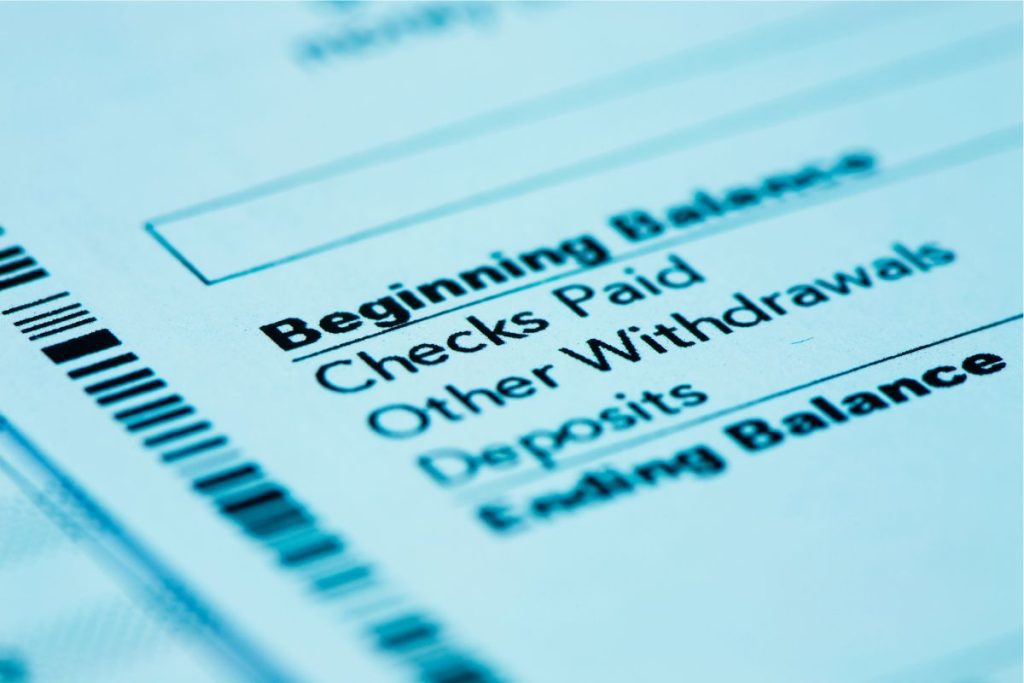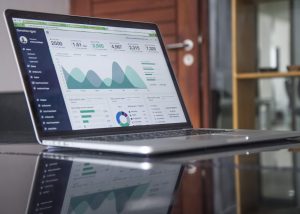Did you know that a recent survey found only 57% of adults in the U.S. are financially literate? Someone with good financial literacy understands where their money is going and how to make it work for them. It’s the ability to make smart financial decisions- pay bills, borrow and save responsibly, and invest for the future.
These money management skills can be learned at any age. It’s never too late – or too early – to start!
The First Step of Building Financial Literacy: A Bank Account
The first step in building financial literacy is opening a bank account. If you can, set up direct deposit. This keeps your money secure and saves you the high fees of cash advance companies.
Along with your bank account, you can get a debit or credit card and checks, which makes paying for things and tracking your money easier. Don’t forget that the FDIC insures accounts up to $250,000, so you don’t have to worry about economic changes impacting your funds.
Many banks also allow you to set up recurring payments directly for your checking account. It makes it easy to always pay your bills on time. A debit card also allows you to keep less cash in your wallet.
Everyone’s situation is different, so you’ll want to evaluate options like overdraft protection, fees, and limits.
Consider opening a checking and savings account at the same time. This will help you start saving for your future and building an emergency cushion.

Step Two: Budgeting
Budgeting is a crucial part of financial literacy. It helps you know exactly where your money goes. However, budgeting requires a deep dive into your spending habits, and you’ll likely need to change some of them.
Elements of a successful budget include:
- A monthly spending plan you’ll stick to
- Ways to lower your current bills
- A plan for paying off existing debt
- Short-, medium-, and long-term goals
- A breakdown of you and your family’s needs
Getting Started with a Budget
Creating a budget may seem overwhelming. But the best thing to do is dive right in!
Start by tracking your expenses. You can use an Excel spreadsheet, expense tracker, or any number of apps or software on the market for this purpose. Find one that makes sense to you. Many can be linked to your bank account(s), which simplifies keeping track of your expenses, especially if you don’t pay for anything with cash.
- Check out our post on budgeting apps and software – Top Apps for Smart Financial Planning
Identify types of expenses. There are two types: fixed and variable. Fixed expenses are things that don’t change from month to month—items like rent/mortgage, car payment, student loan payments, or insurance premiums. Variable expenses change monthly—items like groceries, medical care, and personal care (haircuts, manicures, etc.).
Add it all up. After three months of tracking your expenses, add it all up and find the average. Be sure to look at the categories, too.
Analyze the variables. Most people overspend on variable expenses. Look carefully at your spending in this area. Be honest with yourself about the ones that bring you the most joy and the ones you can live without. This will be hard, but it’s a necessary step. Once you’ve identified the ones you can live without, start cutting.
Smart Money Decisions
Pay yourself first. This is a key component of financial literacy. A portion of every paycheck should automatically be put in savings. If you’re able to split your direct deposit between accounts, you should do this automatically and watch your savings grow. If you must do it manually, make it a habit on payday. You’ll be surprised how quickly it adds up! Then, be sure to figure in the percentage you’ll be saving into your budget.
Set your budget. By looking at what you need for fixed and variable expenses and savings every month, you now know the dollar amount you need to live on. If you’re not making that amount, consider what you can cut from variable expenses. If that’s not enough, you may need to consider a lifestyle change.

Building Financial Literacy Step Three – Savings and Debt
Most people have at least a debit card and one credit card. When used correctly, they’ll help you build your credit score and achieve financial independence.
Most financial experts agree that reserving only one credit card for emergencies is the best route. It should also be paid off immediately to avoid getting hit with high interest. In addition, some businesses require a credit card. Setting one up for occasional use and paying it off immediately can help build your credit. Just don’t rely on it.
With a debit card, you’re spending money you already have. This ensures you’re sticking to your budget. But pay attention to your account. Overspending leads to overdraft fees.
Building Financial Literacy and Your Savings
Building your savings is an integral part of budgeting and financial literacy. It helps ensure unforeseen emergencies don’t take the money you need to pay bills and builds up a reserve for larger purchases down the road.
- 53% of Americans have less than six months’ worth of expenses in savings
- More than one in five Americans have no emergency savings
- Most adults ages 30-plus (61%) worry about having enough money to cover a large, unexpected expense.
- 1 out of every 5 people near retirement age (over 59) has no money saved
To start building your savings, make a financial commitment you can keep. If it’s as small as $10 a paycheck, that’s okay! Stick with it, and it will grow. Be disciplined. This money is not for splurging on the latest tech or new clothes. If you need to take money from savings, put it back as soon as possible.
Pro Tips:
- Set up a portion of your paycheck to automatically go to savings
- Make it your first priority, not your last
Understanding Debt
Personal debt in America has been on a slow, steady climb for decades. According to a 2020 American Household Credit Card Debt Study, the average U.S. household has:
- $6,365 in credit card debt
- $241,815 in mortgage debt
- $56,572 in student loan debt
The average credit card score on Experian was 714. Your score is in the Very Good category, ranging from 740 to 799. With a FICO® Score of 760, you’re above the average credit score. Being in this range could mean you’re likely to receive more favorable interest rates from lenders.

Understanding Credit Scores
Companies use credit scores to get a picture of your overall financial well-being. Equifax, Experian, and TransUnion assign rankings from 300 (high risk) to 850 (low risk) based on spending habits and other factors.
When you start paying bills regularly and spending with plastic, you build your credit history. This record shows how often you borrow, how quickly you repay, and how much you owe follows you throughout your life.
You can get a free copy of your credit report every year.
Be sure you know where you stand and address any issues immediately.
A high credit score can help you qualify for low-interest loans on cars, homes, and credit cards. Your credit score may also be a factor if you’re looking to move or get a new job.
If you miss payments, make late payments, or accrue a lot of debt, your score will be lower. Just as a high score can open doors, a low one can mean those same doors are no longer available.
How to Use Credit Responsibly
Many Americans consider using credit cards as a way of life. For some, it’s a tool for building credit. Others accumulate a constant flow of debt that increases with every purchase.
According to Experian, consumers have an average of three credit cards. How many are in your wallet?
If you learn to use them wisely, credit cards can be a tool to improve your credit score and improve your life.
Choose the Right Credit Card
Many cards have minimum requirements; the higher your score, the more perks you’ll receive. Also, pay attention to any special introductory offers and when they expire.
Make a Game Plan for Using Your Card
Make your payments on time. Use a calendar or planner to help you keep track of dates and spending. Keep your balance well below the account limit and only spend what you can immediately repay.
Paying it Off
If you’ve built up credit card debt, take a deep breath and look at how much you owe. Take another deep breath and consider how much you can afford each month. Use this information to develop a long-term repayment strategy. Talk to your creditors. They may be willing to work with you. Consolidation and settlement should be a last resort.

Student Loan Debt
Today’s student loan debt is almost as common as a car loan or credit card debt.
For most students, it’s not whether they’ll go to college but where. And the “how to pay for it” question doesn’t arise until further down the decision-making process. For example, if parents haven’t started college savings accounts (and most haven’t), students take out loans and are faced with the prospect of repaying them upon graduation.
- Over 40 million Americans have at least one outstanding student loan
- Americans owe more than $1.2 trillion in student loans, which amounts to 6% of the National Debt
- On average, students who borrow graduate with $29,000 in debt
When you sign the promissory note, look at when the first payment is due and how much it will be. Then, file that information somewhere; you’ll be able to find it again and use it as a goal. If you can work a few hours during the week or full time during the summer and save that money, you’ll have a surplus towards your student loan debt as soon as you graduate.
Pro tips:
- Know when your grace period ends.
- Mark your calendar so you never miss a payment, and set up automatic payments
Repayment Options
After graduation, you may have options for how to repay your loans. For example, federally secured loans have more extended repayment options and options that start smaller so you can get some job experience and build your income before making larger payments.
In addition to making your payments on time, you’ll want to pay more than the amount due whenever possible. This reduces the principal balance and shortens the life of your loan.
Pro tips:
- Pay more than the amount due.
- Avoid skipping payments and incurring late fees.
What to Do If You Can’t Repay Student Loans
Your income may change for many reasons. If that happens and you can’t pay your minimum payment, it’s important to communicate with the loan servicer. They often have precautions in place to fill the gap. Situations such as a change in employment status or medical conditions may make you eligible to defer or reduce your payments. Do not ignore the loan. It won’t go away.
Pro tips:
- Communicate with lenders if you’re unable to make payments.
- Don’t ignore your loan commitments if you’re struggling financially.
-
Find Out More About – The Importance of Teaching Financial Literacy in High School
-

Real Estate and Financial Literacy
Homeownership is a goal for many and often a sound financial investment. It builds equity and a sense of achievement. But it’s also a long-term investment and must be undertaken carefully.
For most people, buying a home is the biggest purchase they’ll ever make. It’s also a purchase often deferred due to student loan debt, unemployment, and the stringent requirements for obtaining a mortgage.
Before signing a mortgage, calculate all the costs involved with homeownership. Include “hidden” expenses like taxes, insurance, home improvement/maintenance, and emergency expenses. Also, be sure to leave some savings untouched after the purchase.
You want to be sure you’ll have enough to do more than “just get by.” Depending on your credit score and rates, it may make sense to wait a bit longer and save for a larger down payment.
The home-buying process is lengthy and requires a significant commitment from buyers. On average, homebuyers search for ten weeks and visit at least ten homes.
- In 2023, the median price of a single-family home was $412,000.
- The average price of a new single-family home in 2023 was $430,300.
Create Your Dream Home on a Budget
Foreclosures and Short Sales
When a borrower misses too many payments, the bank opts to foreclose on the property. A short sale occurs when profits from the house are less than the remaining mortgage. In this case, the lender often opts to release the debtor from the remaining commitment.
For buyers, this is an opportunity to get more house for less money. It may mean more hoops and paperwork, but it can be an option for buyers on a limited budget with good credit.
Always be sure to have a home inspection, so you’re aware of any potential problems or repairs.

Building Retirement Financial Literacy
The earlier you start saving for retirement, the more options you’ll have for investing. As the average lifespan increases, people need more and more funds for retirement.
Resources to help you prepare for the future include a personal savings account, bank, investment portfolio, money manager, investment advisor/financial planner, and employer.
- The average retirement age is 62.
- The average length of retirement is 20 years.
- According to the Center for Retirement Research, nearly one-third of all households have no money saved for retirement.
Spend Safely: Don’t Run Out of Money in Retirement
Annuities
An annuity can be a valuable part of your retirement plan. They’re purchased with one premium or a series of premiums and are backed by insurance, which guarantees the payout amount.
Unlike other retirement savings options, an annuity’s principal investment grows over time and is tax-deferred until payouts are made. Recipients are taxed on the distribution amount rather than the entire value.
In some cases, annuities can also be used to have a lot of cash right away—for example, hefty medical expenses. While cashing in immediately does mean the overall amount is less than taking monthly payouts later, it is an option if needed.
Starting Retirement Planning
Consider working with a Certified Financial Planner or other professional. They will have access to information and markets you may not. In addition, they’re familiar with market trends and challenges. Some things they’ll want to know:
- At what age do you plan to stop working?
- Do you plan to work part-time during your retirement?
- Do you have any health conditions you’ll need to pay for?
- What kind of retirement benefits does your company offer?
- Will you receive a pension?
AARP and other sites provide additional resources for building financial literacy.
Pro tips:
Consider downsizing and keeping the funds to help supplement your income.
- Take those 401(K) savings with you when you change jobs.
- Decrease financial risks as you age.
- Make retirement savings a priority, no matter what your age.
Current Assets
Look at the income and savings you already have. If possible, set up automatic, recurring transfers into a retirement account. Ask your financial planner to estimate your portfolio’s current value and how those assets will mature. Take advantage of employer matching programs and tax-advantaged accounts like IRAs and 401(k)s.

Future-Proofing
Get an estimate of your retirement income. The Social Security Administration has a tool for this. The longer you wait to collect benefits before full retirement age, the more your payments will be. Add in any pension or other employer-backed benefits.
As you age, periodically check the value of your portfolio. Then, work with your financial planner to move assets into appropriate risk categories and take advantage of maximum allowances and catch-up opportunities.
Retirement Timeline
Age 50
Begin making catch-up contributions.
Age 59 ½
Tax penalties for early withdrawal from retirement accounts are gone, but leaving the money in means it has more time to grow.
Age 62
Minimum age to collect social security benefits. The longer you wait, the more you’ll get.
Age 65
Eligible for Medicare.
Age 66
Suitable for full social security benefits if born between 1943 and 1954.
Age 72
To avoid hefty penalties in the future, begin taking Required Minimum Distributions (RMDs) from retirement accounts by this age.
The journey of building financial literacy is an ongoing process, full of opportunities to learn and grow. To support this journey, we invite you to subscribe to our newsletter. It’s filled with useful tips, the latest information, and advice about managing money wisely. By joining our newsletter, you become part of a community dedicated to smart financial decisions. Subscribing will help you stay informed and continue to enhance your skills in building financial literacy.
Which aspects of building financial literacy do you struggle with the most? Let us know in the comments so we can help!
**True Assisting does not provide legal, accounting, or tax advice. The information offered is provided for general informational and educational purposes only and is not a substitute for professional advice. Accordingly, before taking any actions based on such information, we encourage you to consult with the appropriate professionals.




